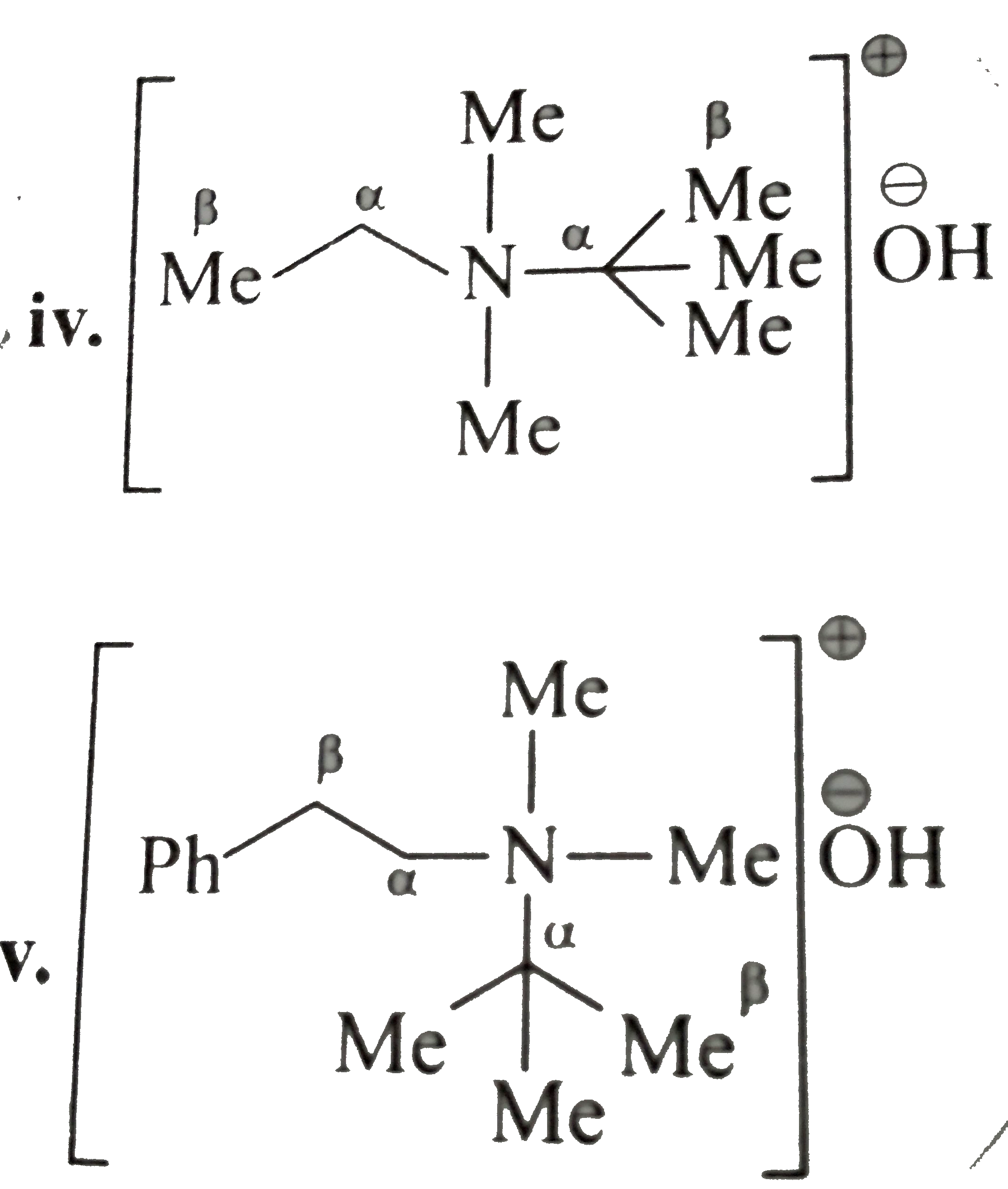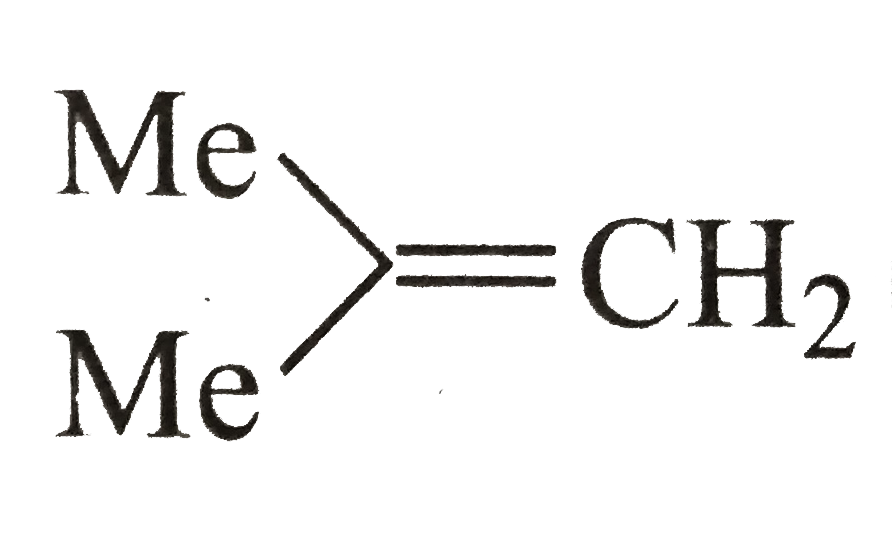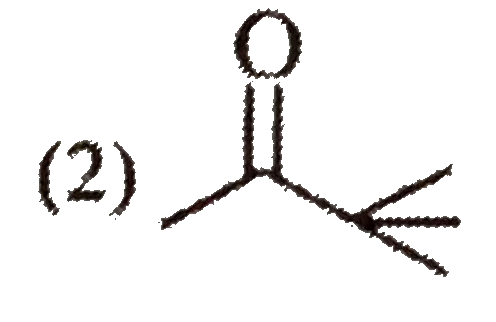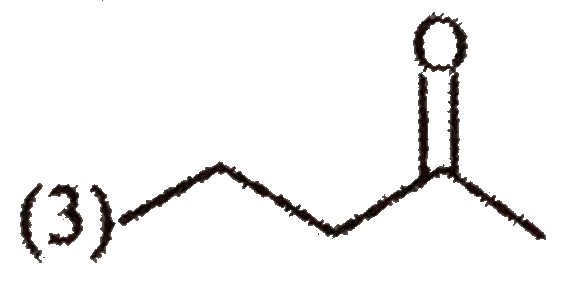Give the alkene formed on heating the following (Hofmann degradation) :
i.
ii. ![Give the alkene formed on heating the following (Hofmann degradation) : i. [overset(beta)(CH(3))overset(alpha)(CH(2))-overset(Me)overset(|)underset(Me)underset(|)(N)-overset(alpha)CH(2)-overset(beta)(CH(2))-CH(3)]^(o+)overset(Theta)OH ii. iii. iv. v. .](https://d10lpgp6xz60nq.cloudfront.net/physics_images/KSV_CHM_ORG_P2_C15_S01_014_Q01.png)
iii.  .
.
Video Solution
Text Solution
i. Less-substituted alkene is formed , not
i. 
iii. Here, Saytzeff product is formed not Hofman product because enxylic (H) atom's acidic character is greatly increased and the stability of the conjugated alkene influences the reaction .
is formed , Not
iv. It gives

and
The result is Saytzeff product, not Hofmann product. There are two kinds of atoms, one on and other on any of the group. Thus in this case, relative acidities are not a factor. Elimination from the group is favoured statistically (there are nine of these , vs three from and also because a more stable alkene is formed.
v. is formed, not  [same explanation as in (ii) above]
[same explanation as in (ii) above]
|
Topper's Solved these Questions
- ORGANIC COMPOUNDS WITH FUNCTIONAL GROUPBOOK - CENGAGE CHEMISTRYCHAPTER - ORGANIC COMPOUNDS WITH FUNCTIONAL GROUPEXERCISE - Solved Examples
12 Videos
- ORGANIC COMPOUNDS WITH FUNCTIONAL GROUPBOOK - CENGAGE CHEMISTRYCHAPTER - ORGANIC COMPOUNDS WITH FUNCTIONAL GROUPEXERCISE - Exercises Subjective
21 Videos
- NUCLEAR CHEMISTRYBOOK - CENGAGE CHEMISTRYCHAPTER - NUCLEAR CHEMISTRYEXERCISE - Archives Subjective
13 Videos
- P-BLOCK GROUP 15 ELEMENTS - THE NITROGEN FAMILYBOOK - CENGAGE CHEMISTRYCHAPTER - P-BLOCK GROUP 15 ELEMENTS - THE NITROGEN FAMILYEXERCISE - Exercises Archives (Subjective)
28 Videos
Similar Questions
Knowledge Check
The IUPAC name of CH3−OH∣C∣H−CH2−O∣∣C−CH3 is:
A2-Hydroxypentan-4-oneB4-Hydroxypentan-2-oneC4-oxopentan-2-olD2-oxopentan-4-olCH3−CH2−CH2OH∣CH2 and CH3−OH∣OH∣CH3−CH3
Achain isomersBpositional isomersCboth (a) and (b)Dnone of theseCH3−CH3∣C∣OH−CH3∣C∣NH2−CH3HNO2−−−→Δ?
A B
B C
C D
D
OH∣CH2−OH∣CH−OH∣CH2+Hiexcess→X
What is X ?
View SolutionCH3−CH2−O∣∣C−CH3∣CC∣CH3−CH3PhCO3H−−−−−→A , A' will be :
View SolutionIUPAC name of 5CH3−4C∣OHH−3CH2−2C∣COOHH−1CH3 is
View SolutionWhat is the major product alkene formed in the following elimination?
CH3CH2CH2CH3∣N+∣CH3−CH3∣C∣CH3−CH3Δ−−→
View SolutionThe monomer of the polymer
~CH2−CH3∣C∣CH3−CH2−CH3∣C∣CH3~
View Solution
